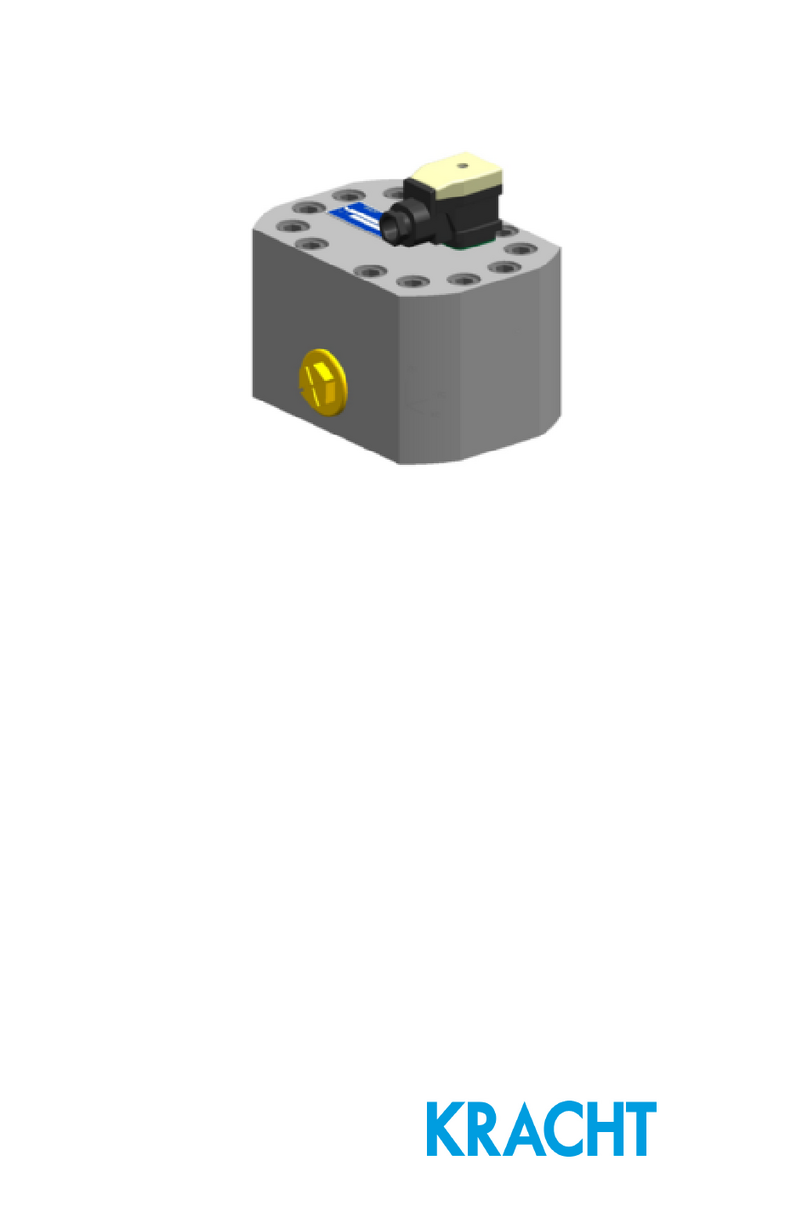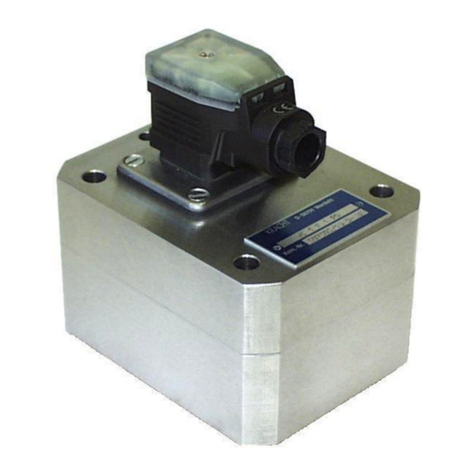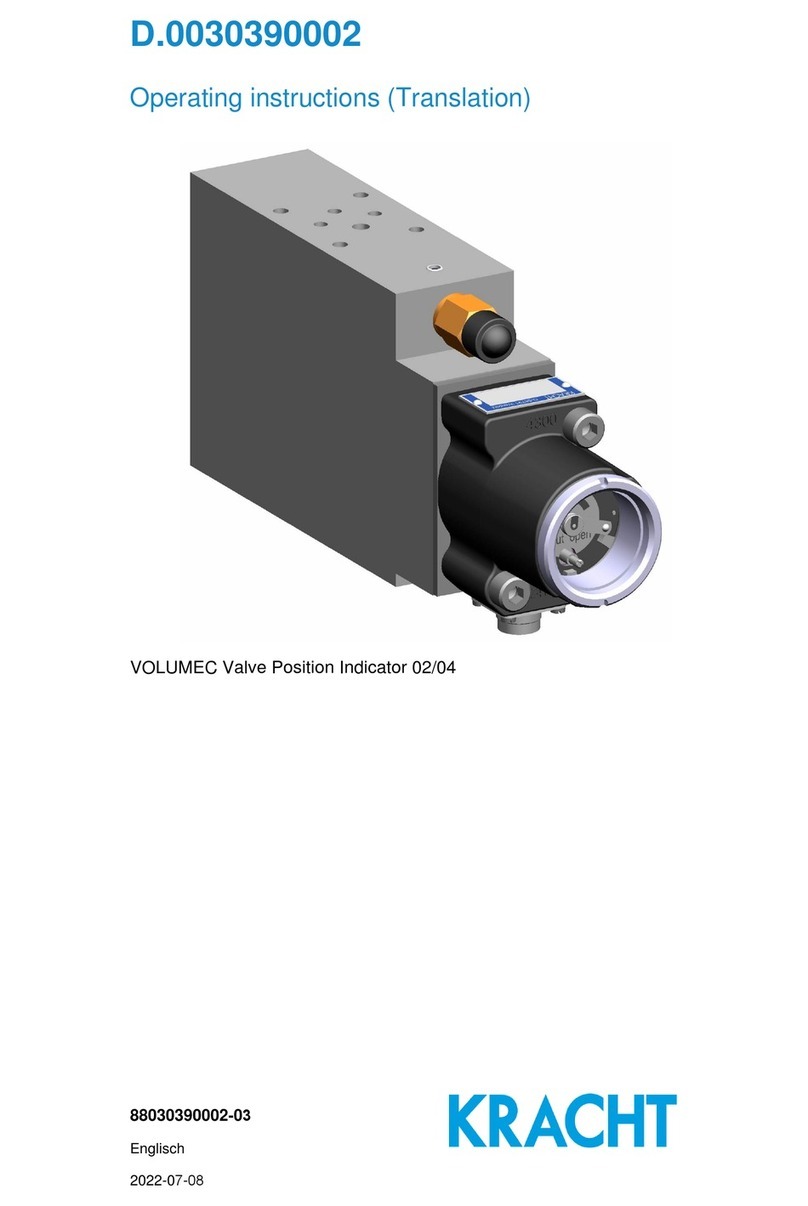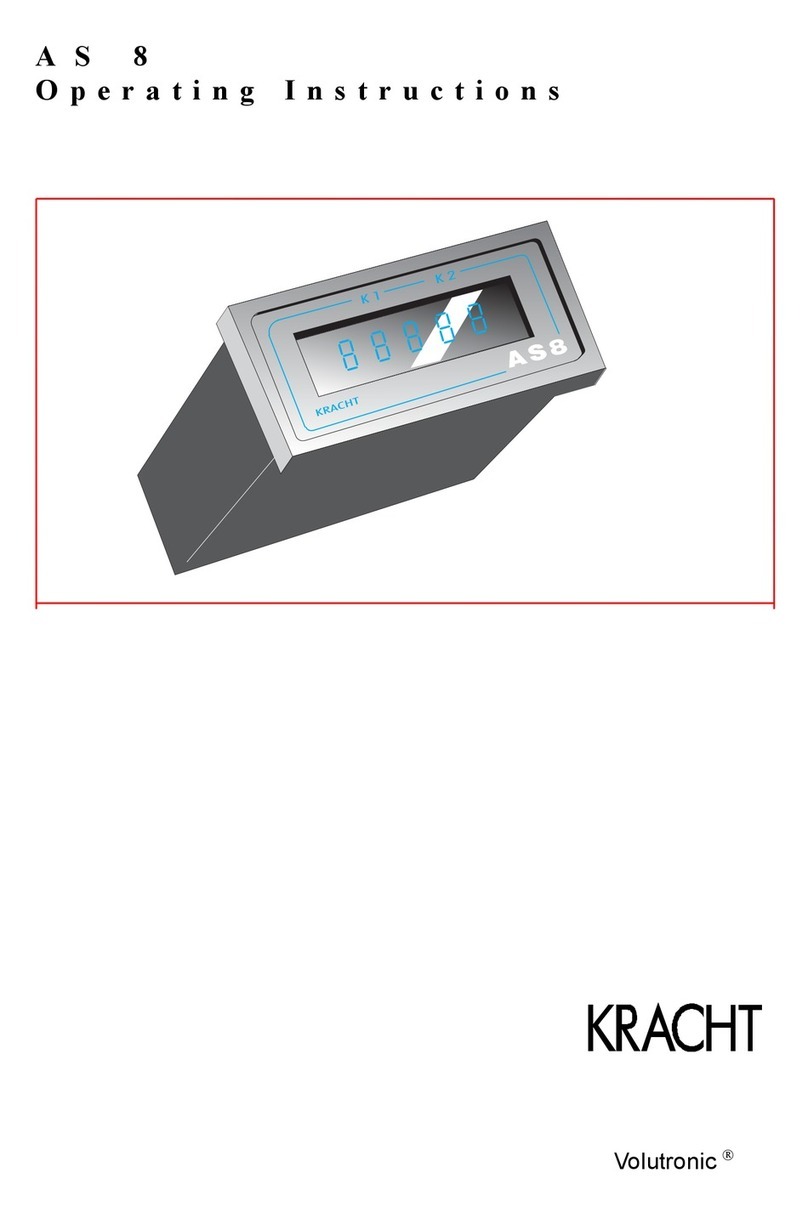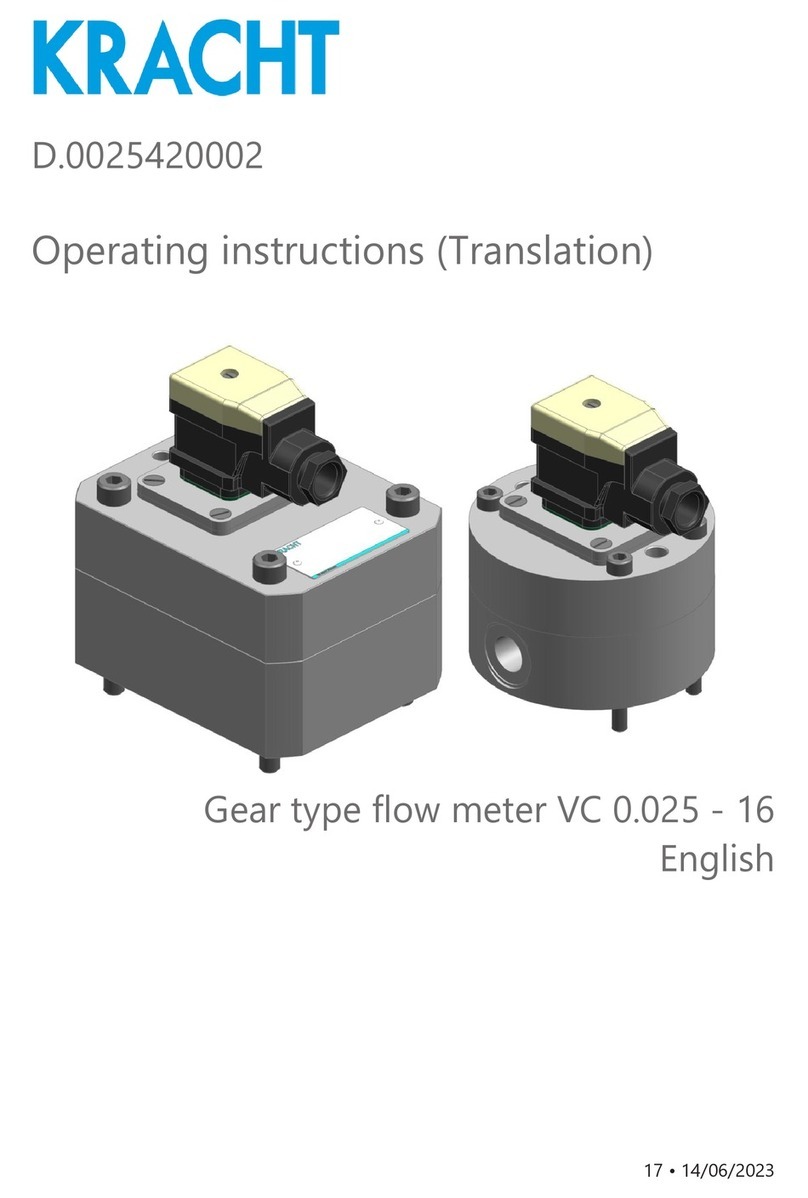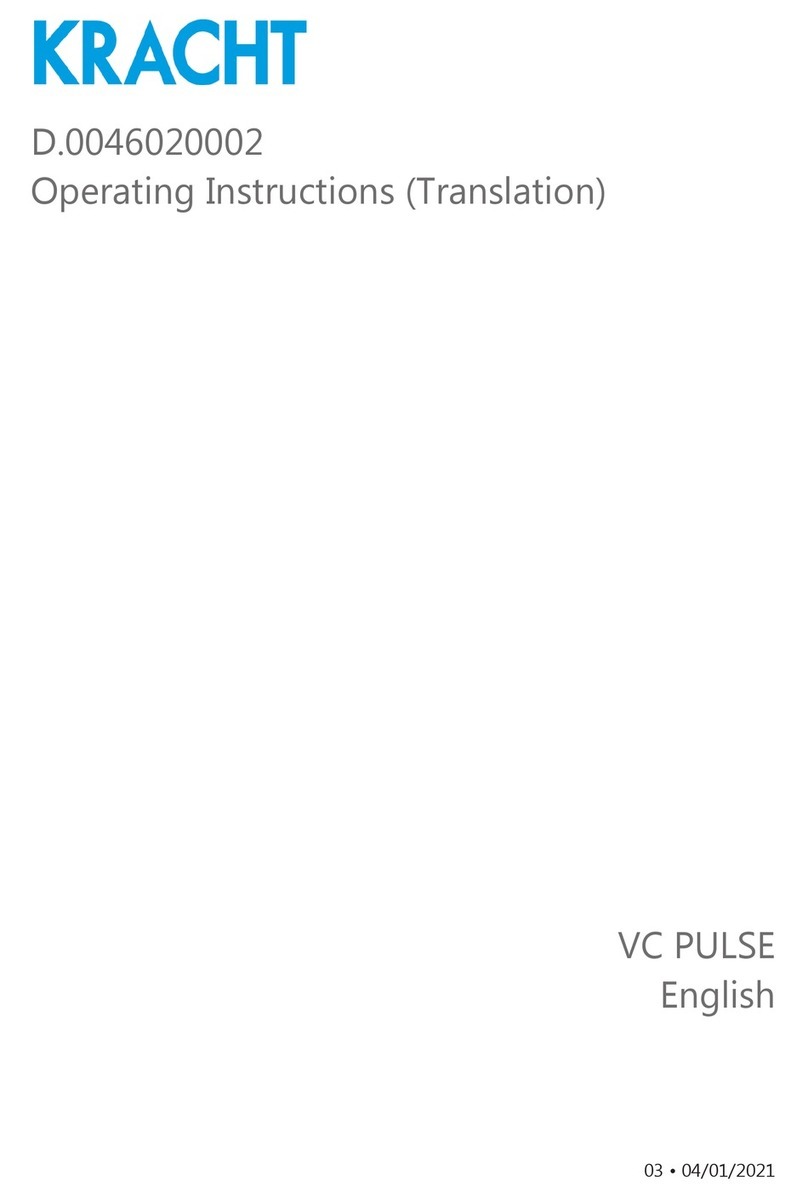
Table of content Kracht GmbH
ii 88025530002-11
Table of content
1 General ................................................................................................................................................................4
1.1 About the documentation ....................................................................................................................................................... 4
1.2 Manufacturer address................................................................................................................................................................ 4
1.3 Symbols........................................................................................................................................................................................... 5
2 Safety...................................................................................................................................................................6
2.1 Intended use.................................................................................................................................................................................. 6
2.2 Personnel qualification and training.................................................................................................................................... 6
2.3 Basic safety instructions............................................................................................................................................................ 7
2.4 Fundamental hazards.................................................................................................................................................................7
3 Device description.............................................................................................................................................. 9
3.1 Functional principle .................................................................................................................................................................... 9
3.2 Basic design.................................................................................................................................................................................10
3.3 Type key ........................................................................................................................................................................................11
3.4 Special numbers.........................................................................................................................................................................12
4 Technical data...................................................................................................................................................13
4.1 General ..........................................................................................................................................................................................13
4.2 Overview nominal sizes...........................................................................................................................................................14
4.3 Permissible temperature range............................................................................................................................................15
4.4 Material data ...............................................................................................................................................................................15
4.5 Weight ...........................................................................................................................................................................................16
4.6 Dimensions ..................................................................................................................................................................................16
5 Transport and storage .....................................................................................................................................17
5.1 General ..........................................................................................................................................................................................17
5.2 Transport.......................................................................................................................................................................................17
5.3 Storage ..........................................................................................................................................................................................17
5.4 Storage conditions....................................................................................................................................................................18
6 Installation ........................................................................................................................................................19
6.1 Important notes about explosion protection.................................................................................................................19
6.2 Mechanical installation............................................................................................................................................................20
6.2.1 Preparation....................................................................................................................................................................20
6.2.2 Plate connection ........................................................................................................................................................21
6.2.3 Pipe connection...........................................................................................................................................................23
6.3 Electrical connection ................................................................................................................................................................23
6.3.1 Preamplifier (S, H , K).................................................................................................................................................23
7 Operation start-up ...........................................................................................................................................25
7.1 Safety instructions for start-up ............................................................................................................................................25
7.2 Preparation...................................................................................................................................................................................25
7.3 Further operation start-up.....................................................................................................................................................25












